Abstract
Measurements of oxidation rates, respiratory quotients (RQ), and release of 14CO2 from uniformly labeled substrates showed that glutamate, α-ketoglutarate, and synthetic and natural amino acid mixtures are oxidized by suspensions of Bdellovibrio bacteriovorus strain 109J. The oxidation of these substrates largely suppress the endogenous respiration of the Bdellovibrio cells and may or may not cause a small increase, 20 to 50%, in their rate of oxygen consumption. The failure of respired substrates to increase markedly the respiration rate of the Bdellovibrio cells over the endogenous value is discussed. Carbon from these substrates is incorporated into the Bdellovibrio cells during oxidation. Acetate is also oxidized, but its oxidation inhibits endogenous respiration by only about 40% and no acetate is assimilated. The RQ of the Bdellovibrio cells changes from a value characteristic of endogenous respiration to that characteristic of the oxidation of glutamate or of a balanced amino mixture very shortly after the attack of the Bdellovibrio cells on their prey, and the latter RQ is maintained during intraperiplasmic growth. Glutamate, or a mixture of amino acids in the external environment, contributes to the carbon dioxide produced by the Bdellovibrio cells growing intraperiplasmically. It is concluded from these data that amino acids, derived from the breakdown of the protein of the prey, serve as a major energy source during intraperiplasmic growth of B. bacteriovorus 108J. Insofar as they were tested, B. bacteriovorus strains 109D and A. 3. 12 were similar in respiration to strain 109J.
Full text
PDF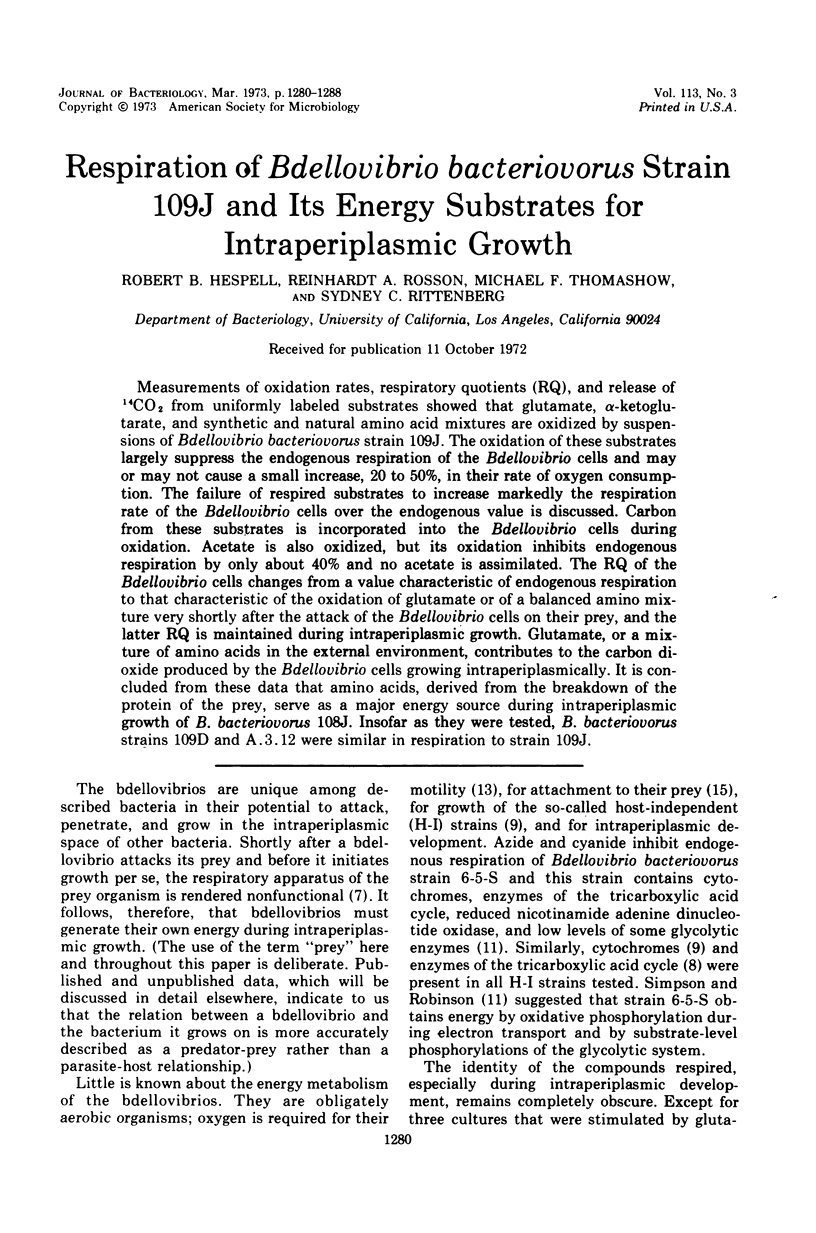
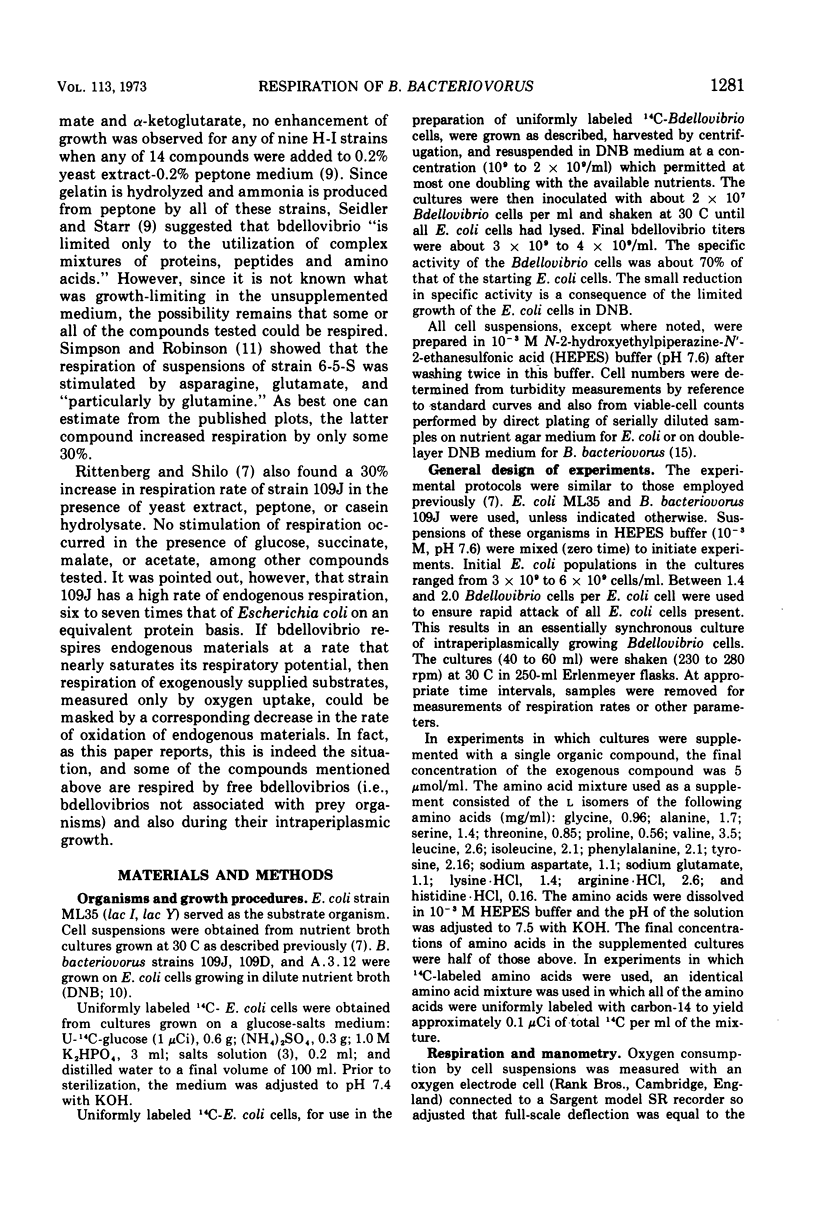
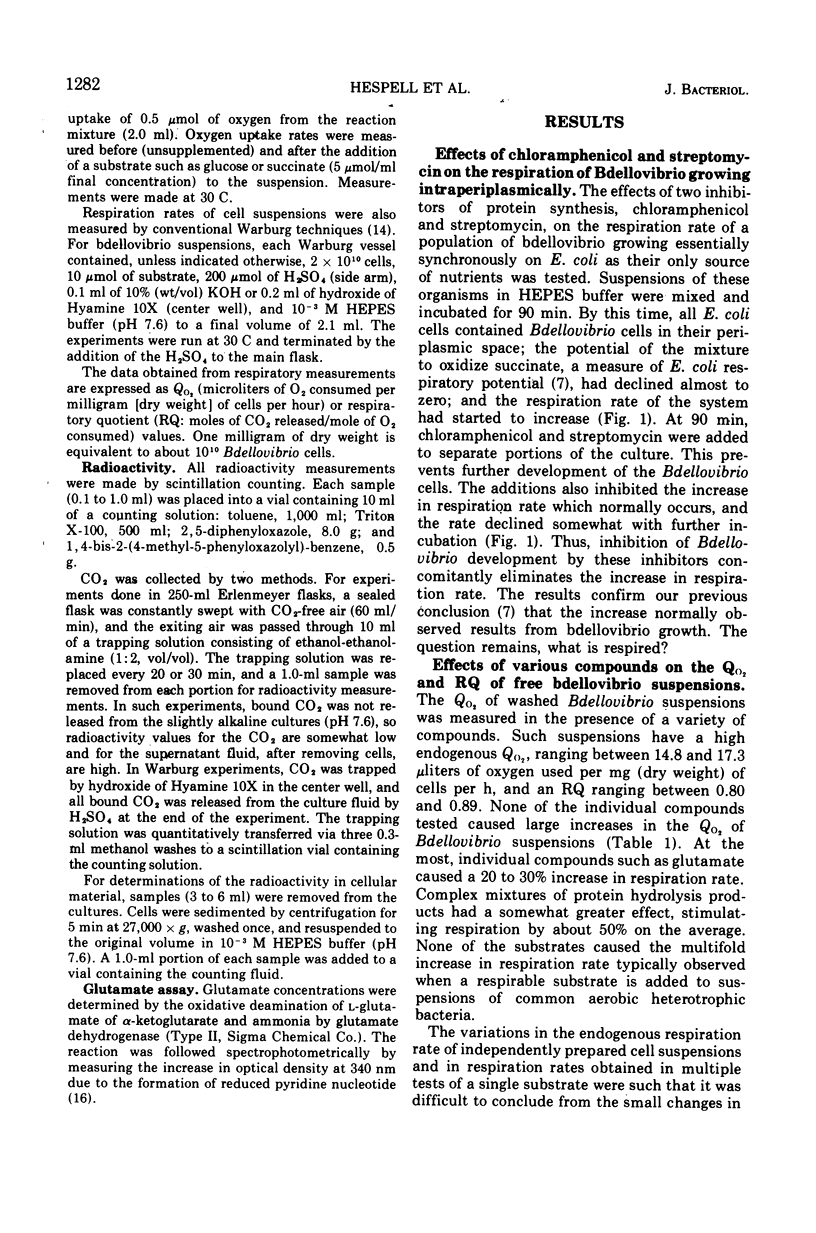
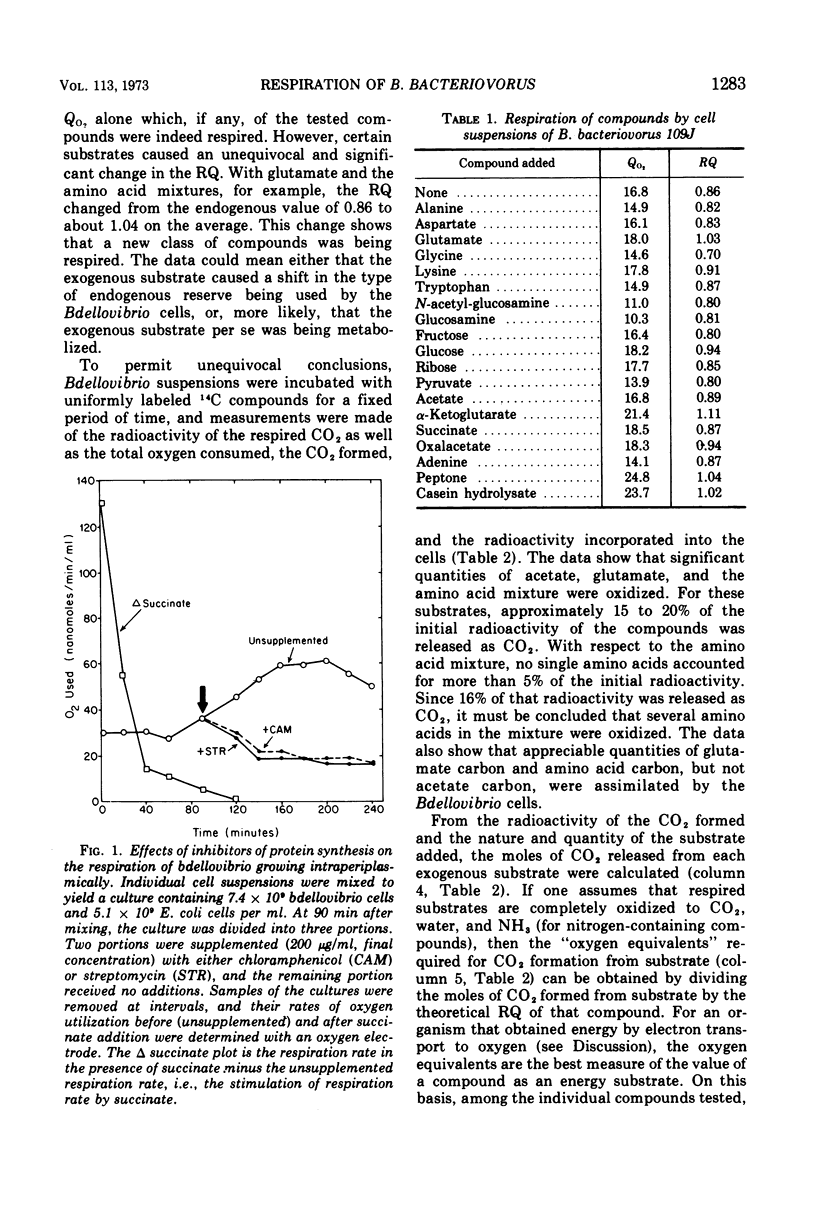
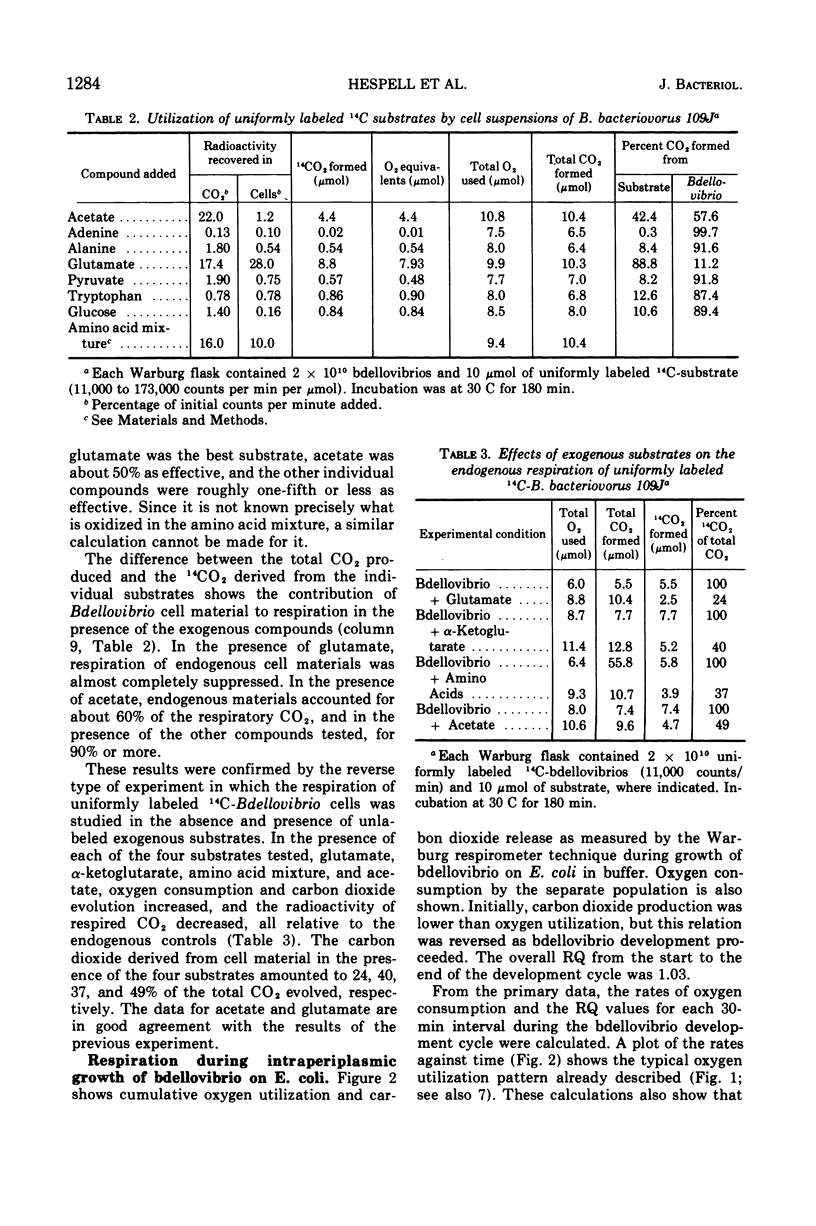
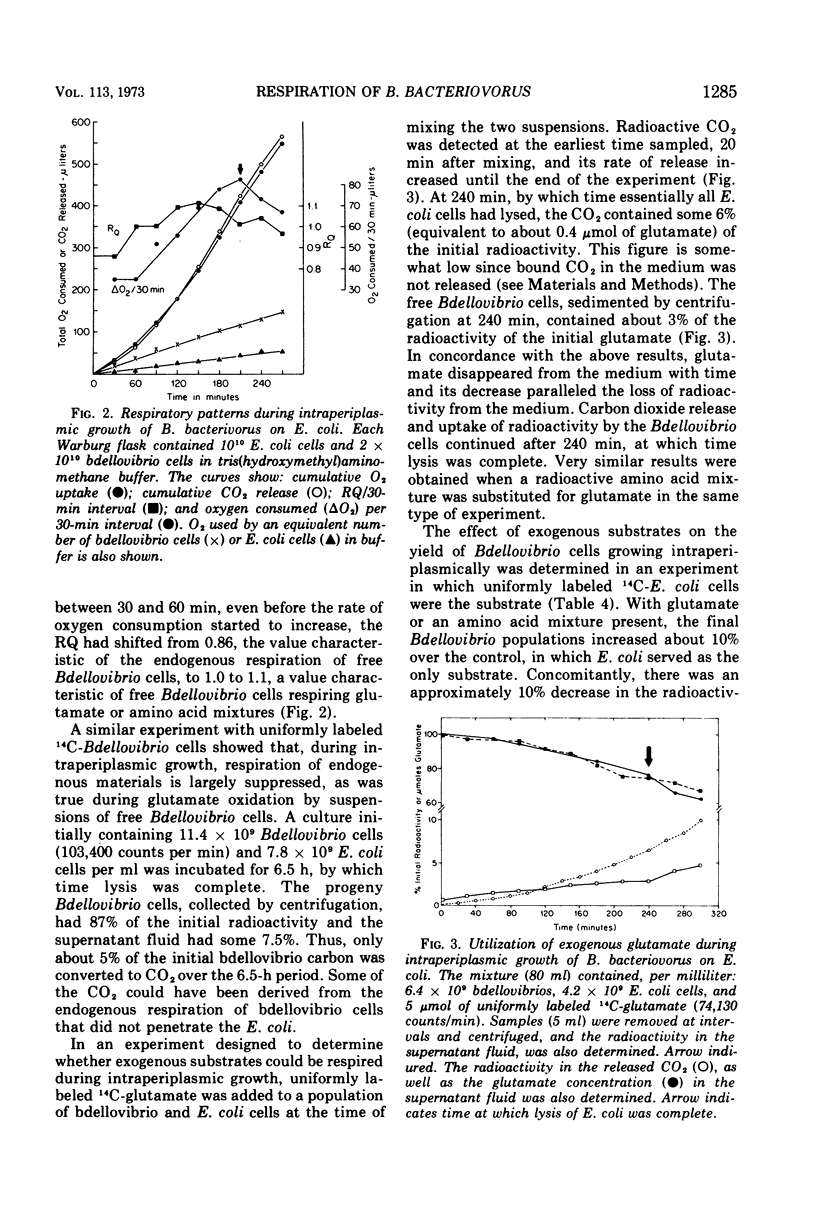
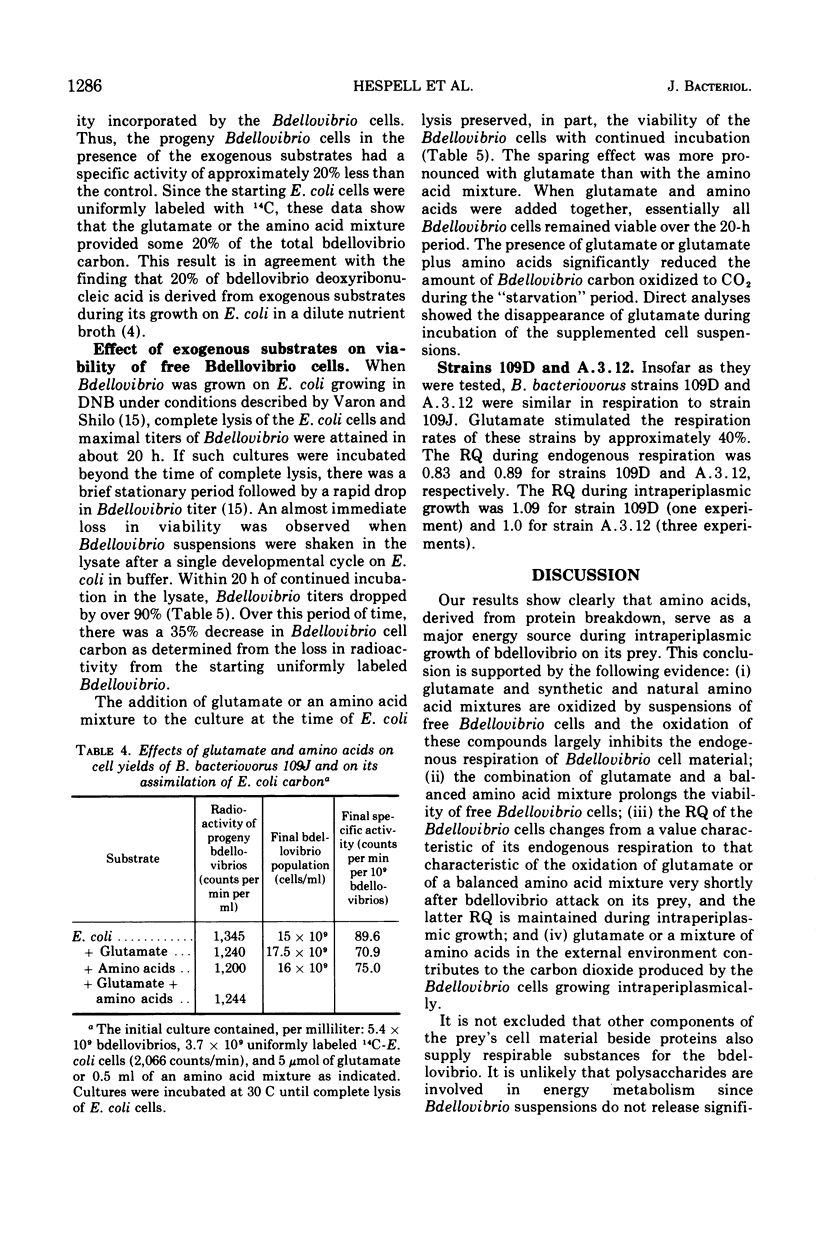

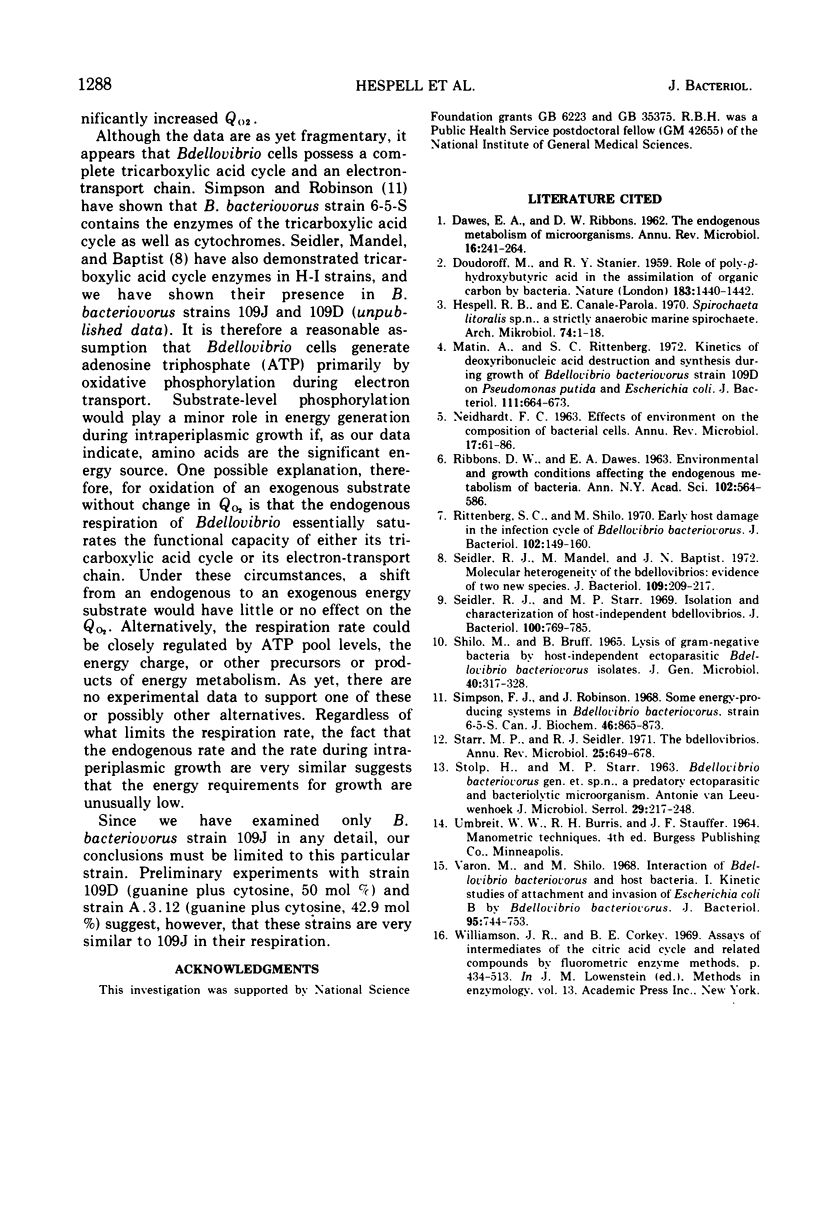
Selected References
These references are in PubMed. This may not be the complete list of references from this article.
- DAWES E. A., RIBBONS D. W. The endogenous metabolism of microorganisms. Annu Rev Microbiol. 1962;16:241–264. doi: 10.1146/annurev.mi.16.100162.001325. [DOI] [PubMed] [Google Scholar]
- DOUDOROFF M., STANIER R. Y. Role of poly-beta-hydroxybutyric acid in the assimilation of organic carbon by bacteria. Nature. 1959 May 23;183(4673):1440–1442. doi: 10.1038/1831440a0. [DOI] [PubMed] [Google Scholar]
- Matin A., Rittenberg S. C. Kinetics of deoxyribonucleic acid destruction and synthesis during growth of Bdellovibrio bacteriovorus strain 109D on pseudomonas putida and escherichia coli. J Bacteriol. 1972 Sep;111(3):664–673. doi: 10.1128/jb.111.3.664-673.1972. [DOI] [PMC free article] [PubMed] [Google Scholar]
- NEIDHARDT F. C. EFFECTS OF ENVIRONMENT ON THE COMPOSITION OF BACTERIAL CELLS. Annu Rev Microbiol. 1963;17:61–86. doi: 10.1146/annurev.mi.17.100163.000425. [DOI] [PubMed] [Google Scholar]
- RIBBONS D. W., DAWES E. A. Environmental and growth conditions affecting the endogenous metabolism of bacteria. Ann N Y Acad Sci. 1963 Jan 21;102:564–586. doi: 10.1111/j.1749-6632.1963.tb13661.x. [DOI] [PubMed] [Google Scholar]
- Rittenberg S. C., Shilo M. Early host damage in the infection cycle of Bdellovibrio bacteriovorus. J Bacteriol. 1970 Apr;102(1):149–160. doi: 10.1128/jb.102.1.149-160.1970. [DOI] [PMC free article] [PubMed] [Google Scholar]
- STOLP H., STARR M. P. BDELLOVIBRIO BACTERIOVORUS GEN. ET SP. N., A PREDATORY, ECTOPARASITIC, AND BACTERIOLYTIC MICROORGANISM. Antonie Van Leeuwenhoek. 1963;29:217–248. doi: 10.1007/BF02046064. [DOI] [PubMed] [Google Scholar]
- Seideler R. J., Mandel M., Baptist J. N. Molecular heterogeneity of the Bdellovibrios: evidence of two new species. J Bacteriol. 1972 Jan;109(1):209–217. doi: 10.1128/jb.109.1.209-217.1972. [DOI] [PMC free article] [PubMed] [Google Scholar]
- Seidler R. J., Starr M. P. Isolation and characterization of host-independent Bdellovibrios. J Bacteriol. 1969 Nov;100(2):769–785. doi: 10.1128/jb.100.2.769-785.1969. [DOI] [PMC free article] [PubMed] [Google Scholar]
- Shilo M., Bruff B. Lysis of Gram-negative bacteria by host-independent ectoparasitic Bdellovibrio bacteriovorus isolates. J Gen Microbiol. 1965 Sep;40(3):317–328. doi: 10.1099/00221287-40-3-317. [DOI] [PubMed] [Google Scholar]
- Simpson F. J., Robinson J. Some energy-producing systems in Bdellovibrio bacteriovorus, strain 6-5-S. Can J Biochem. 1968 Aug;46(8):865–873. doi: 10.1139/o68-129. [DOI] [PubMed] [Google Scholar]
- Starr M. P., Seidler R. J. The Bdellovibros. Annu Rev Microbiol. 1971;25:649–678. doi: 10.1146/annurev.mi.25.100171.003245. [DOI] [PubMed] [Google Scholar]
- Varon M., Shil M. Interacton of Bdellovibrio bacteriovorus and host bacteria. I. Kinetic studies of attachment and invasion of Escherichia coli B by Bdellovibrio bacteriovorus. J Bacteriol. 1968 Mar;95(3):744–753. doi: 10.1128/jb.95.3.744-753.1968. [DOI] [PMC free article] [PubMed] [Google Scholar]


